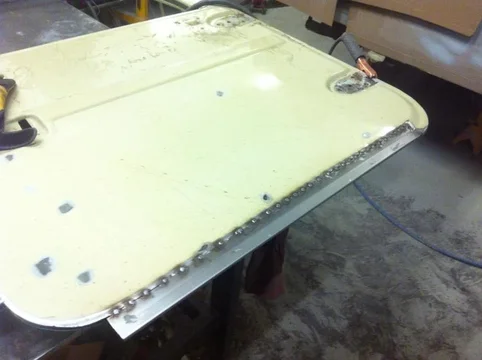Awl_TEQ
Supporting Vendor
- Thread starter
- #321
Applying lessons learned I started on the passenger door.
I started by cutting away all of the rust on both sides. Then I tacked in the outer skin patch.


Having already botched the other door repair I went to the extreme to keep this weld flat, straight and not oil-canning the door. I did: one set of tacks from end to end. Then hammer each tack to flatten it a bit and stretch it a bit. Then grind of the excess metal down to the surface. Then repeat. Repeat until the seam is welded solid.




I started by cutting away all of the rust on both sides. Then I tacked in the outer skin patch.


Having already botched the other door repair I went to the extreme to keep this weld flat, straight and not oil-canning the door. I did: one set of tacks from end to end. Then hammer each tack to flatten it a bit and stretch it a bit. Then grind of the excess metal down to the surface. Then repeat. Repeat until the seam is welded solid.






